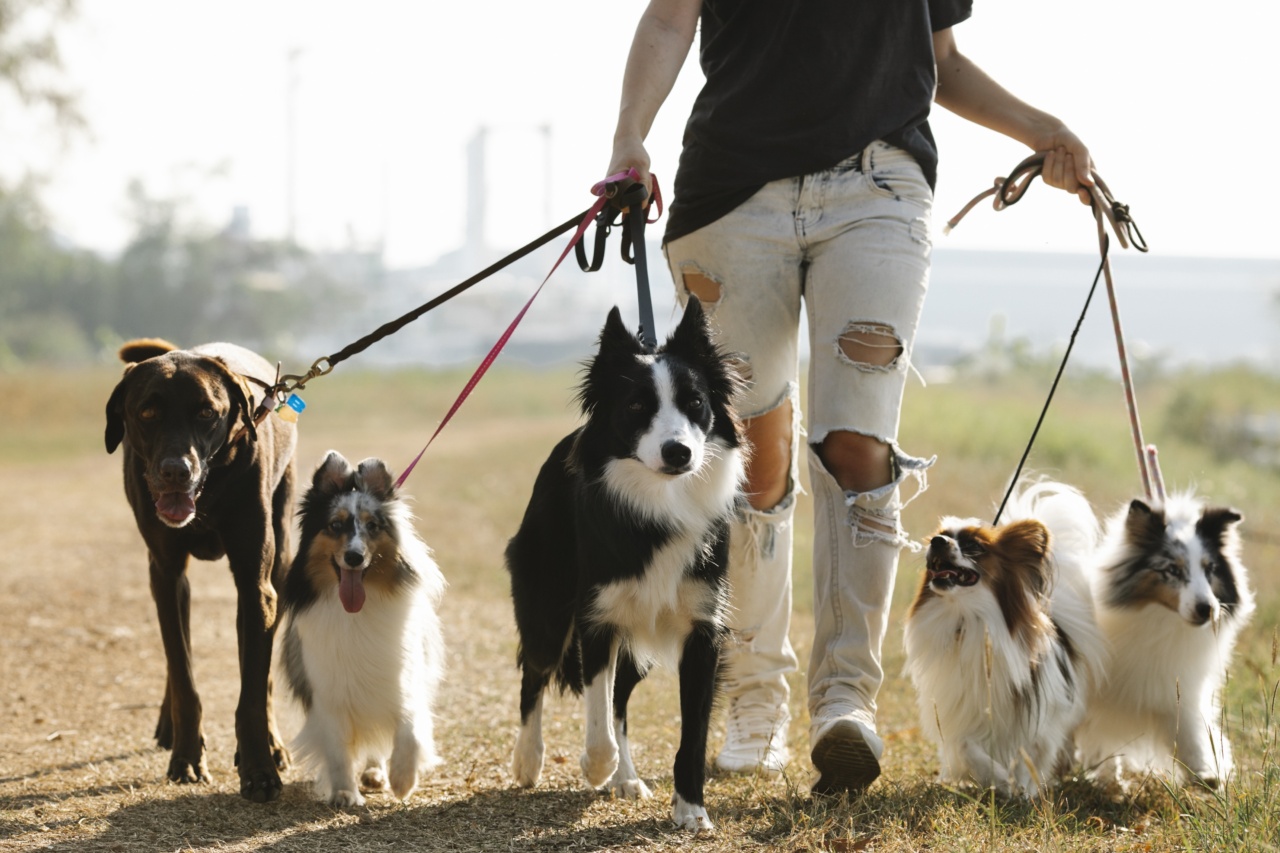Walking is an essential part of a dog’s daily routine. It provides them with physical exercise, mental stimulation, and an opportunity to explore the world around them.
But how many walks does a dog need every day? The answer to this question depends on several factors, including the dog’s breed, age, energy level, and overall health. In this article, we will delve into the importance of dog walks and discuss the appropriate frequency of walks for different types of dogs.
The Benefits of Walking for Dogs
Regular walks offer numerous benefits for our canine companions. Let’s take a look at some of the advantages:.
Physical Exercise
Just like humans, dogs require regular physical exercise to maintain their health and prevent obesity. Daily walks help burn calories, improve muscle tone, and keep joints limber.
Regular exercise also aids digestion, leading to a healthier and happier pup.
Mental Stimulation
Walks are not just about physical exertion; they also provide dogs with mental stimulation. During a walk, dogs encounter various sights, sounds, and smells, which engage their minds and help prevent boredom.
Mental stimulation can improve a dog’s overall behavior and reduce the likelihood of destructive behaviors born out of frustration or excess energy.
Socialization Opportunities
Regular walks allow dogs to socialize with other canines and humans. This social interaction encourages proper behavior and helps dogs become more comfortable and well-adjusted in different environments.
Dogs that are properly socialized are generally less anxious and exhibit fewer behavioral issues.
Bonding Time
Walking together strengthens the bond between dogs and their owners. It provides an opportunity for quality one-on-one time, where trust and communication are enhanced.
Building a strong bond through walks can lead to a harmonious and fulfilling relationship between pet and owner.
Factors that Influence the Number of Walks
Now that we understand the importance of walks for dogs, let’s discuss the factors that determine how many walks they should have each day:.
Breed
Different dog breeds have varying exercise needs. High-energy breeds such as Border Collies or Boxers may require more frequent and vigorous walks compared to low-energy breeds like Bulldogs or Basset Hounds.
Working breeds, such as German Shepherds or Siberian Huskies, may also need additional mental stimulation and structured exercise.
Age
A dog’s age plays a significant role in determining the number of walks required. Puppies have a surplus of energy and may need shorter, more frequent walks to prevent them from becoming overly tired or restless.
As dogs age, their energy levels may decrease, but regular walks are still important to keep them healthy and mobile.
Energy Level
Each dog has its own unique energy level. Some dogs are naturally more active and require more walks or longer sessions to tire them out. Conversely, less energetic dogs may be satisfied with fewer walks.
Assessing your dog’s energy level and observing their behavior can help determine the appropriate number of walks.
Overall Health
A dog’s overall health condition should also be considered. Dogs with certain health issues may require tailored exercise plans or shorter, more leisurely walks.
Always consult with a veterinarian to determine the most suitable exercise routine for a dog with specific health concerns.
Recommended Number of Walks
While there is no hard and fast rule for the exact number of walks a dog needs every day, here are some general guidelines:.
Small and Toy Breeds
Small and toy breeds, such as Chihuahuas or Pomeranians, generally require around two to three short walks each day. These dogs have smaller legs and may tire more quickly compared to larger breeds.
Medium Breeds
Medium-sized breeds, including Cocker Spaniels or Beagles, benefit from daily walks of approximately 30 minutes to an hour. These dogs have moderate energy levels and typically enjoy a mix of exercise and mental stimulation during their walks.
Large Breeds
Large breeds, such as Labrador Retrievers or Golden Retrievers, require more exercise due to their size and energy levels. These dogs usually need at least one to two walks of one to two hours each day.
Ensuring they receive adequate exercise can help prevent behavioral issues that may arise from pent-up energy.
Working and Sporting Breeds
Working and sporting breeds, like Border Collies or Huskies, are known for their high energy levels. These dogs require frequent walks and additional mental stimulation.
Ideally, they should have multiple walks or exercise sessions each day, lasting at least two hours in total.
Elderly Dogs
Senior dogs may have decreased energy levels and may require shorter, more leisurely walks. Two or three shorter walks each day, rather than one long walk, can be beneficial for older dogs to prevent fatigue and joint strain.
Adapting the Routine
It’s important to remember that these recommendations are not absolute and should be adjusted depending on your individual dog’s needs. Each dog is unique, and their exercise requirements may change throughout their life.
Pay attention to their behavior, adapt the routine as needed, and consult a veterinarian if you have any concerns.
Conclusion
Regular walks are vital for every dog’s overall well-being. They provide physical exercise, mental stimulation, socialization opportunities, and valuable bonding time between dogs and their owners.
The number of walks required each day depends on various factors, including breed, age, energy level, and health. By understanding your dog’s specific needs and providing appropriate exercise, you can ensure they lead a happy, healthy, and fulfilling life.































